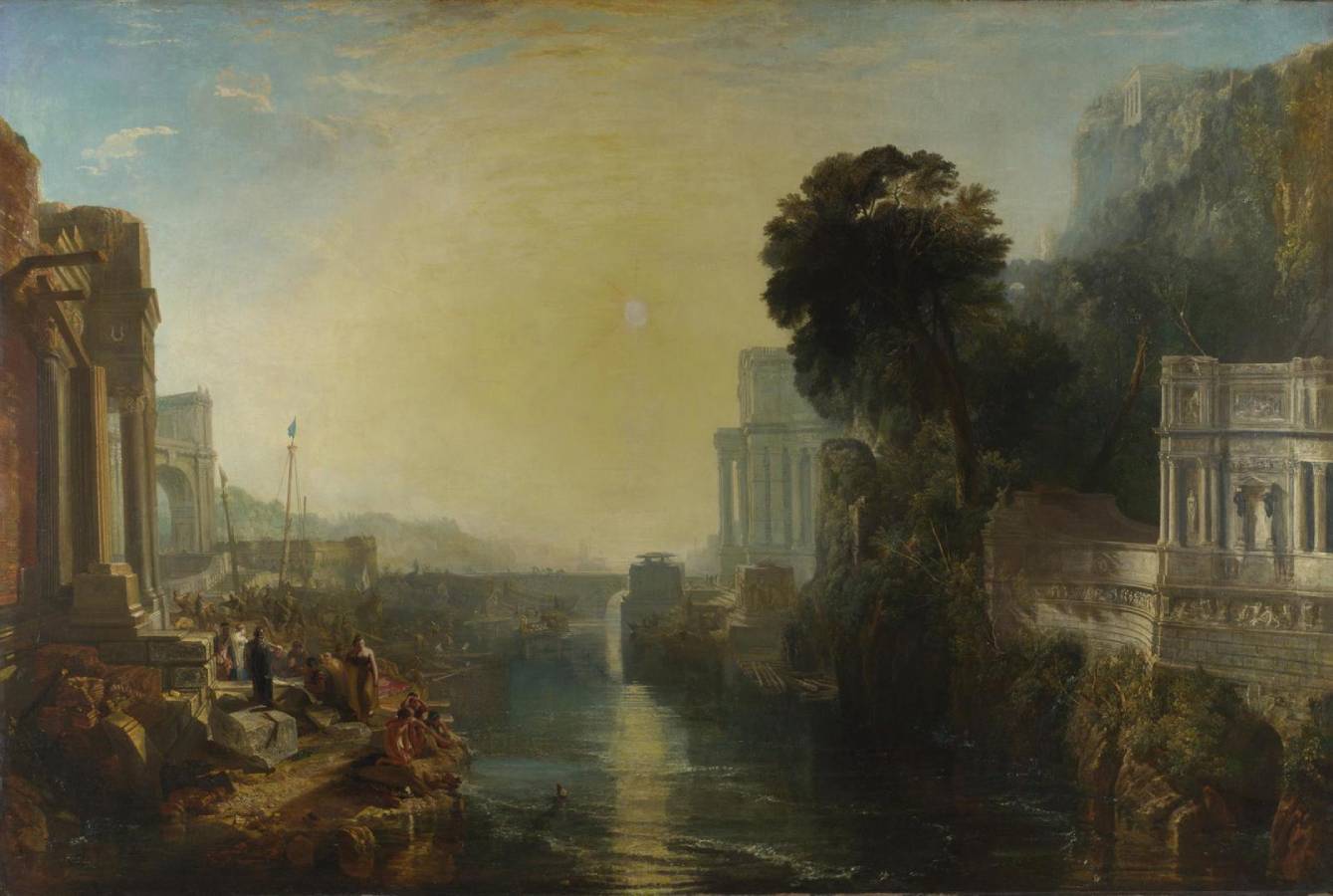Turner, Joseph Mallord William (1775-1851)
Dido building Carthage
1815
Oil on canvas, 155.5 x 230 cm
National Gallery, London
Turner’s painting is based on the English seventeenth-century author and poet John Dryden’s translation of the Aeneid, the monumental Latin poem written by the Roman poet Virgil. Regarded as the founding epic of Ancient Rome, the poem tells the story of the Trojan prince Aeneas. Following the defeat of Troy by the Greeks, Aeneas spends years wandering with his followers before finally settling in Italy. Believing it to be his destiny to found a city, he becomes the ancestor of the Romans. During his travels, Aeneas is shipwrecked at the North African city of Carthage, whose queen, Dido, falls in love with him. After he departs for Italy without her, she kills herself in despair. Eight of Turner’s 11 pictures about Aeneas relate to his association with Dido.
Aeneas’ story, with its themes of exile, destiny and the founding of a new civilisation through the creation of Rome, clearly appealed to Turner. The rise and fall of empires such as Rome and, in this instance, Carthage, was also a theme that preoccupied him for nearly forty years. He painted 10 major paintings on the history of Carthage. Although not a series, these pictures are meditations on history, and the emergence and collapse of grand human ambitions – this painting is paired with The Decline of the Carthaginian Empire (Tate gallery, London). These grand narratives frequently concern a historical figure whose fate is subject to forces beyond their control. For Turner, the story of Carthage was also the tragic story of Dido and Aeneas.
Standing on the left and dressed in blue, Dido visits the tomb being built for her husband, Sychaeus. He had been killed by her brother, from whom she had escaped to establish Carthage which she ruled as its first queen. The man in a cloak and helmet standing before her is probably Aeneas. At this point in the story, the tragic outcome of their liaison lies in the future. Wearing a diadem and accompanied by a Black servant and young purse-bearer, Turner’s Dido may have been inspired by a recent operatic production. Rather than a love-struck or doomed victim, she is a commanding figure of strength, as described in Dryden’s line: ‘Amidst the crowd she walks serenely great.‘
This is the first of Turner’s paintings in which he intended to match the seventeenth-century French landscape painter, Claude, in particular his Seaport paintings. These typically include a wide stretch of water, extending to the horizon in the picture’s centre, flanked by classical buildings and tall trees rising from the quay. A crowd of figures and scenes of harbour life usually complete the scene. Although Turner broadly follows Claude’s model, his own painting is filled with architectural features, human activity and highly textured detail not found in Claude’s more classical compositions.
In Turner’s second will, made in 1831, he specified that the picture, together with his Sun Rising through Vapour, should hang ’in perpetuity’ in the then newly built National Gallery alongside Claude’s A Seaport and Landscape with the Marriage of Isaac and Rebekah. (NG)
See also:
• Carthage | Dryden, John (1631-1700) | Virgil (70 BC-19 BC): The Aeneid (English)
